The purpose of the project is the structure of the metropolitan node Tuscolana-GRA-Anagnina in a futuristic scenario in which the actual ring (GRA) is replaced with a much external twin, able to perform the task of primary circular mobility system of Rome.
The current GRA becomes an infrastructural platform to spent for public surface or underground facilities and appropriate section for the creation of a grand avenue.
The solution that the project proposes sees the solution of the node – intersection of two consular roads and the GRA – in the implementation of a "round" system of the average radius of about 300
meters provided of parking spaces to meet the natural call of the place as inter-modal node between hinterland and urban areas of the capital.
The founding principle is the hierarchization in layers of metropolitan and local traffic, creating an integrated mobility system overcoming the great physical and perceptual separations currently, at all scales, affecting the district and constituting compelling barriers to development.
The most architectonic and compositing part of the project concerns the design of the interior of this great round, the whose dimensions allow a re-appropriation of land by the city to live and functional served spaces, rather than respect areas from viaducts and motorways.
The approach to the design of these spaces, in prevalence residential, tries to start from the need to reason at a perceptual humanizing scale: close distances between services and residences, clear separation between roads and residential areas, large green areas each one so clearly characterized as well the various apartments blocks.
The language that characterizes the establishment wants to focus attention on the search for a geometric-chromatic expressivity, joyous and radiant, informal but coherent, recognizable but not noble, made of archetypes and iconography however distant from the post-modernist seriousness.
2008
2009
.jpg)
.jpg)
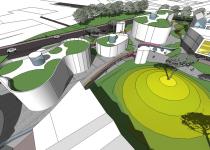
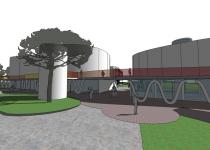
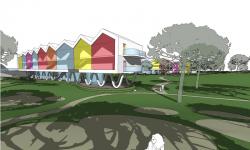
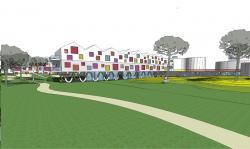

.jpg)
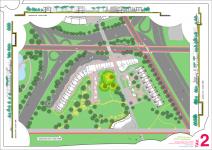
.jpg)
